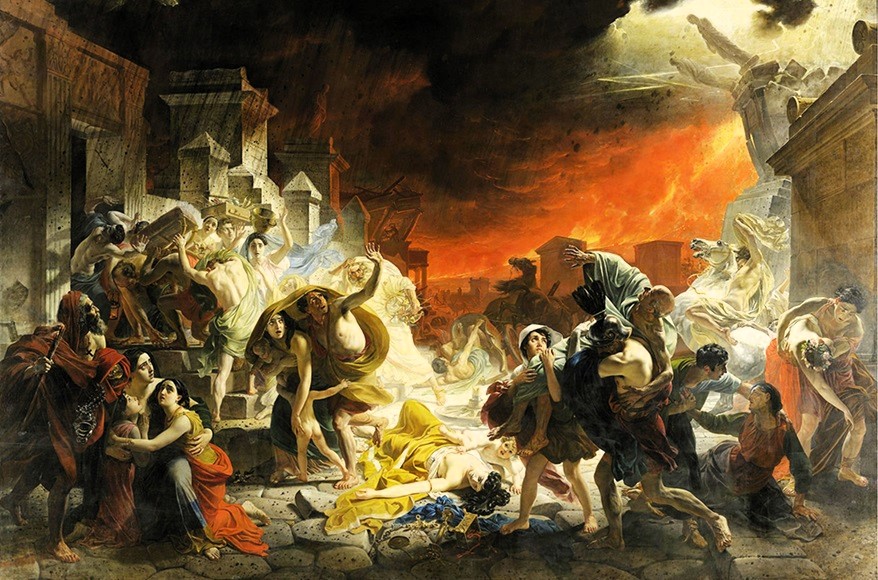The destruction of Pompeii, Italy, is one of the most well-preserved catastrophes in human history. But scientists still disagree on how exactly thousands of Roman people died during those two fateful days in 79 C.E. For decades, many experts thought they asphyxiated amid the massive clouds of ash belched from the volcanic eruption of Mount Vesuvius. More recently, researchers have put forth a different idea: The victims perished instantaneously, when burning hot gas vaporized their body fluids. More on The destruction of Pompeii
Briullov visited Pompeii in 1828 and made sketches depicting the AD 79 Vesuvius eruption. The painting received rapturous reviews at its exhibition in Rome and brought Briullov more acclaim than any other work during his lifetime. The first Russian artwork to cause such an interest abroad, it inspired an anthologic poem by Alexander Pushkin, and the novel The Last Days of Pompeii by Edward Bulwer-Lytton. It depicts a classical topic but exhibits characteristics of Romanticism as manifested in Russian art, including drama, realism tempered with idealism, interest in nature, and a fondness for historical subjects. A self portrait is in the upper left corner of the painting, under the steeple, but not easy to identify. More on this painting
Karl Pavlovich Bryullov (born Dec. 12 [Dec. 23, 1799, St. Petersburg, Russia—died June 11, 1852, Marsciano, near Rome, Papal States [Italy]) Russian painter who combined technical proficiency and classical academic training with a Romantic spontaneity to produce some of the liveliest examples of Russian art of the period.
Bryullov was descended from French Huguenots, and his father was a sculptor. (The family name was Russified in 1821.) Bryullov was educated at the St. Petersburg Academy of Fine Arts (1809–21). He studied in Italy from 1823, painting his best-known work, the monumental “Last Day of Pompeii” (1830–33), while there; it brought him an international reputation. Though he painted other large canvases with historical subjects, none was as successful as “Pompeii.” Much of his continuing reputation rests on his more intimate portraits and his watercolours and travel sketches. More on Karl Pavlovich Bryullov
Please visit my other blogs: Art Collector, Mythology, Marine Art, Portrait of a Lady, The Orientalist, Art of the Nude and The Canals of Venice, Middle East Artists, 365 Saints, 365 Days, and Biblical Icons, also visit my Boards on Pinterest
Images are copyright of their respective owners, assignees or others.
Some Images may be subject to copyright
I don't own any of these images - credit is always given when due unless
it is unknown to me. if I post your images without your permission, please tell
me.
I do not sell art, art prints, framed posters or reproductions. Ads are
shown only to compensate the hosting expenses.
If you enjoyed this post, please share with friends and family.
Thank you for visiting my blog and also for liking its posts and pages.
Please note that the content of this post primarily consists of articles
available from Wikipedia or other free sources online.




No comments:
Post a Comment